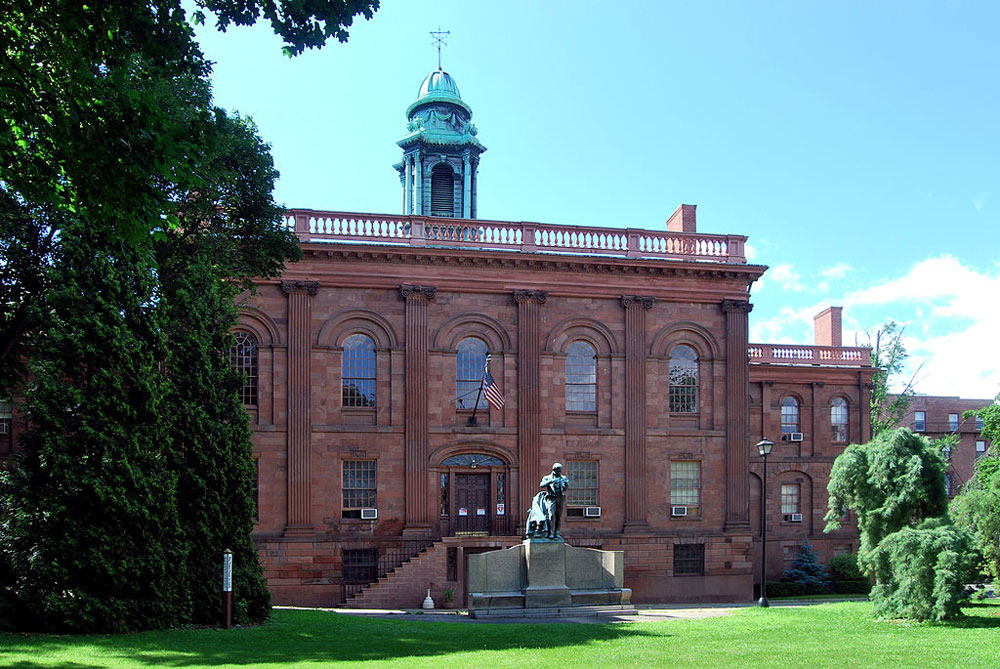
May 6, 2020; Washington Post and The City
Last week, New York’s Governor Andrew Cuomo turned to unraveling one of the Gordian knots that reversing the COVID-19 shutdown poses. His state’s 1.75 million public school students, along with their parents and teachers, were waiting to learn when the governor thought their schools could reopen—how buildings and schedules would need to change to protect their health. What they heard instead was a message that sent shockwaves across his state and beyond: Governor Cuomo saw a crisis too good to waste. This was the moment to radically transform his state’s public education system.
Using the platform of his daily, nationally broadcast briefing, the governor described a failing, static public education system demanding to be changed.
When does change come to a society? Because we all talk about change and advancement, but really, we like control, and we like the status quo, and it’s hard to change the status quo. But you get moments in history where people say, “Okay, I’m ready. I’m ready for change. I get it.”
I think this is one of those moments. And I think education, as well as other topics, is a topic where people will say, “Look, I’ve been reflecting, I’ve been thinking, I learned a lot.” We all learned a lot about how vulnerable we are and how much we have to do, and let’s start talking about really revolutionizing education. And it’s about time.
His framework for change is to fully harness the marvels of technology and create a public education system highly reliant on a new and untested form of education. “The old model of ‘everybody goes and sits in the classroom, and the teacher is in front of that classroom and teaches that class,’ and you do that all across the city, all across the state, all these buildings, all these physical classrooms—why, with all the technology you have?”
That’s right. He didn’t choose to take on problems known to plague public education, making sure that New York’s schools are properly funded, fully staffed, and well equipped. Nor did he choose to address the critical impact of racism and wealth inequality on student success. Instead, he seeks a magic-bullet cure in technology. Following the path taken by the foundations and mega-philanthropists who have fueled decades of efforts to reform public education, he seems willing to try one more experiment out on his state’s children.
Sign up for our free newsletters
Subscribe to NPQ's newsletters to have our top stories delivered directly to your inbox.
By signing up, you agree to our privacy policy and terms of use, and to receive messages from NPQ and our partners.
As reported by the Washington Post’s Valerie Strauss, New York State United Teachers’ president, Andy Pallotta, sees the threat that this approach presents.
If we want to reimagine education, let’s start with addressing the need for social workers, mental health counselors, school nurses, enriching arts courses, advanced courses, and smaller class sizes in school districts across the state. Let’s secure the federal funding and new state revenues through taxes on the ultrawealthy that can go toward addressing these needs. And let’s recognize educators as the experts they are by including them in these discussions about improving our public education system for every student.
Making the governor’s move even more shocking was his choice of Bill Gates and his foundation to lead the effort. The governor sees Gates as “a visionary” who’s spoken about “ideas and thoughts on technology and education” for years. Cuomo sees this as “a moment in history where we can actually incorporate and advance those ideas.”
The governor seems to be ignoring the series of failed attempts to change public education that the Bill & Melinda Gates Foundation has pushed over two decades of effort—Small Schools, Common Core, standardized testing, teacher improvement. Common to all has been the approach Cuomo’s now taking: reliance on experts and a top-down imposition of change. And, as NPQ has noted, they also share the common trait of failing to fulfill their objectives: “Each was seen as a technological breakthrough that would revolutionize public education as the technology of Microsoft had revolutionized computing. And each failed to deliver the promised results.”
Like many of Gates’s earlier efforts, this new venture risks wasting resources, diverting attention away from core needs, and leaving schools worse off at a time when they’ll need to remediate the impact of months of school closure and the trauma of the pandemic. Sarah Reckhow, an assistant professor of political science at Michigan State University, told The City, “What worries me is the idea that somehow, this is the time to reimagine education, and we can somehow do that cheaply, when in fact I think a lot of investment may need to go simply toward stopping the bleeding.”
The governor has picked a new direction with little input from parents, teachers, scholars, or students. He has chosen a leader who has spent decades trying similar change strategies with few positive outcomes to show for his large investments and the larger public spending that came along to support him.
Still, Gates appears to have learned from his experiences, coming “to recognize that those who challenged them for being arrogant and taking a top-down approach to a process that needs to be bottom-up may have been correct.” We hope he will share what he’s learned with Cuomo, and that the governor will be wise enough to listen. As with so much of what goes under the heading of “school improvement and reform,” the price for arrogance is paid by students, their teachers, and the community.—Martin Levine











